Generative AI in Marketing
A Guide to the Latest AI Marketing Tools
Generative AI is like an archeologist who is always digging up new artifacts from the past but has no idea what they mean.
Generative AI is like a sculptor with a block of marble, capable of creating anything you can imagine, but with no idea what to make until you give it direction.
Generative AI is like a paintbrush in the hands of a child, capable of producing both beautiful and terrible things.
— AI-generated responses from TextFX, an AI experiment by Google
Introduction
What Is AI?
If you’ve ever sat behind the wheel of a self-driving car or simply Googled “coffee shop near me,” you have seen artificial intelligence, or AI, at work.
AI is a broad term that refers to machines that can perform tasks and functions we typically associate with human minds. The concept has been around since 1950, with today’s most buzzy type of AI—generative AI—introduced in the 1960s with the world’s first computer chatbots. Since then, it’s been a favored technology in marketing, used in strategies involving bidding algorithms, programmatic and A/B testing. So why is there fresh fervor around AI today?
More recently, in 2014, advancements in machine learning have drawn acclaim—and concern—for its ability to create more humanlike text, images and videos in mere seconds. User-friendly tools like ChatGPT, which launched in 2022, can receive a short prompt, process terabytes of information instantaneously and produce impressively polished content, from witty email subject lines to travel itineraries to lengthy college papers. Other programs like Midjourney and DALL·E can create any image or video the user desires, from the surreal to the hyperrealistic. With many tech companies racing to debut their own versions of AI tools, the opportunities for marketing integrations and enhancing productivity will only continue to grow.
As new generative AI tools become more sophisticated and easier to use, many in our industry are asking if they could replace jobs currently performed by humans. It’s a fair question, but mankind can rest easy. While these machines can generate content faster than a human can, what they lack is empathy. But when generative AI is used as a tool—with a real human being at the helm—the possibilities are endless.
How To Use AI
The beauty of generative AI is its multitude of applications in marketing. From data analysis to SEO to user experience and beyond, many rote tasks that used to take strategists hours or days can be completed in minutes or even seconds. A 2024 survey by HubSpot found that 75 percent of marketers who use AI and automation say it helps them spend less time on “low-impact” manual tasks, freeing up their working hours to focus on more “high-impact” work, like complex strategy and project execution. As we create full-funnel marketing strategies for clients, our teams can leverage generative AI tools to become more productive, effective and agile in our daily work—reducing administrative burden to build the meat of your marketing plans quicker.
That said, AI tools are just that: tools. They are not comprehensive solutions. While their outputs can expedite certain processes, over-reliance on AI without sufficient oversight can lead to errors or inaccuracies. Like any other software you use to streamline your work—apps, CRMs, cloud services, online banking, etc.—generative AI works best when you take its capabilities and customize them to your needs.
AI in Marketing
To improve the User Experience
Digital tools abound for optimizing the UX and accessibility of a website or landing page. Marketers frequently use heatmaps to monitor user behavior on a page and gather data on where engagement is highest and how far users scroll down a page. What used to be a manual process—watching thousands of recordings of individual sessions on a page to glean insights and make recommended improvements—has now become automated thanks to AI.
Microsoft’s behavioral analysis tool Clarity includes a feature called Copilot, which uses AI (the same used in ChatGPT) to read and summarize user interactions. With the aggregated data, Copilot delivers deeper insights with simple takeaways and customized recommendations. We can also use these session summaries to evaluate user experience across devices, operating systems and screen sizes. For example, if Copilot detects a large portion of sessions with “rage clicks” on Android mobile devices using Chrome, we can inspect the issue and work with developers to fix it. With pinpointed insights and data-backed recommendations, strategists can identify and correct costly issues in the buy-flow in close to real time.
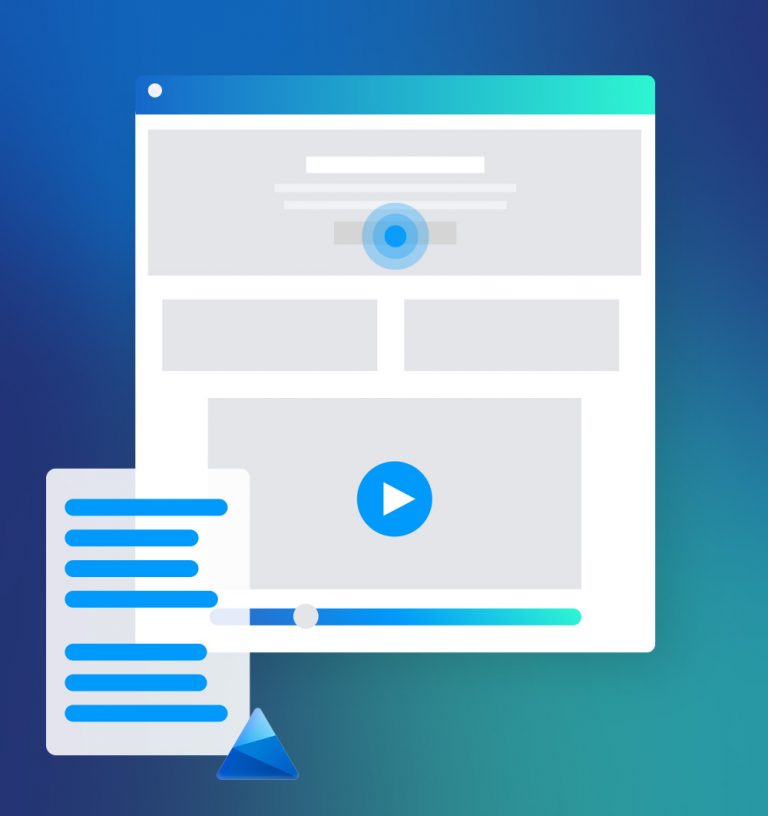
To conduct SEO research
Many SEO-based AI tools exist to accelerate keyword research, raise SERP rankings and align web content with search intent. In a survey by Jasper, 28 percent of respondents who use generative AI tools said one of the tools’ best benefits is to “optimize content for SEO.” HubSpot reports that 54 percent of bloggers and SEO specialists use AI and automation in their work.
ChatGPT is a rich resource for generating semantically related secondary keywords based on a set of primary keywords. It can also support strategists with writing schema markup. Feeding AI the right prompts, with enough specifics or data to parse through, will maximize the tool’s effectiveness, saving SEO specialists hours spent manually culling through keywords and site performance data. From AI’s findings, SEO and content specialists can generate ideas for new content based on top-performing keywords and topics with the most opportunity for SERP ranking.
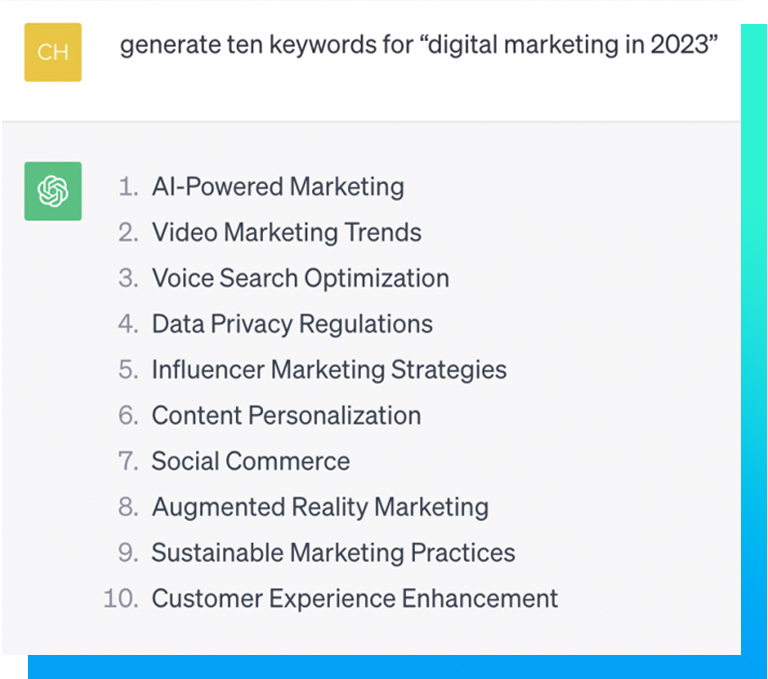
For more in-depth data analysis and faster results, a machine-learning SEO platform like BrightEdge can augment the scale and pace of an organic web strategy. BrightEdge’s AI analyzes millions of web pages, examines thousands of changes each week, and boils them down to critical findings that will improve organic performance, allowing us to build out multiple interlinking strategies simultaneously. It also prioritizes the most high-impact actions in a single feed, giving SEO teams the direction they need to implement these changes faster.
54% of bloggers and SEO specialists use
AI and automation in their work
To Gain SERP Real Estate
Google, which relies on AI to power its search results, is experimenting with generative AI to deliver more comprehensive and helpful answers to users. Instead of producing a list of websites that best match a user’s search query, Google’s Search Generative Experience will create an AI-generated summary of the key information related to their search, with suggestions for follow-up searches. With a conversational tone and capability to respond to detailed questions like, “what’s better for a family with kids under 3 and a dog, Bryce canyon or arches?”, SGE does some of the heavy lifting of researching and organizing information.
By exploring the site pages SGE uses to generate its response to a query, marketers can learn which domains the search engine finds most authoritative and trustworthy. This insight can help marketers create content that better competes for those high-intent searches and earns higher positions in SERPs. With richer, more thorough content results, Google’s latest evolution will favor domains with an in-depth blog strategy to complement their main product or cornerstone pages. Brands that also optimize their content production with the right schema, structure and language will be vital to winning the SERP.
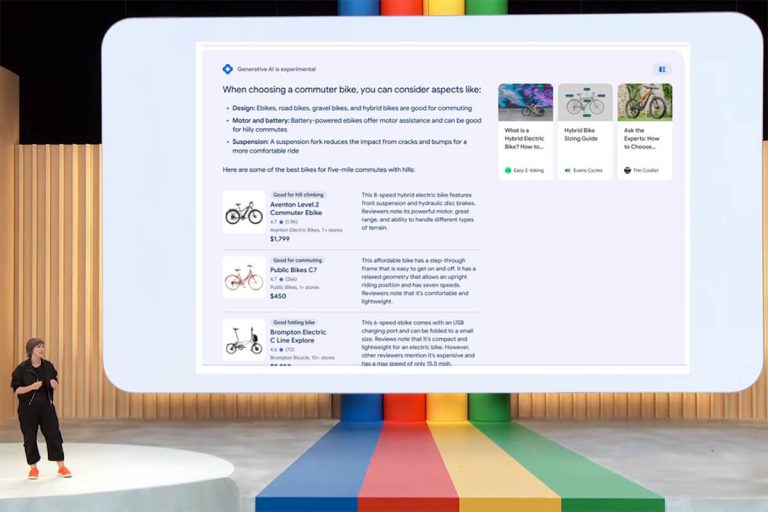
To Support Content Ideation & Creation
Many tools and capabilities that serve SEO specialists as they build a web strategy are helpful for content strategists as well. Content-based AI like ChatGPT can serve as a springboard for creative brainstorming, from blog ideas for people interested in closet organization to brand names for a new deodorant. It saves content strategists time in the early stages of content creation. Instead of spending hours researching a topic, identifying the most-searched keywords and developing a content outline, AI can lay that groundwork, giving the writer more time to deliver excellent content tailored to a brand’s voice and business goals.
In seconds, generative AI tools can scrape the web for information relevant to a query and summarize and organize it for easy use. This is useful for research that would normally require culling through lengthy reports for technical writing tasks or understanding a new topic. Strategists also benefit from the personalization capabilities of AI. With a prompt that includes your target audience, AI can generate content topics or a full content strategy to nurture that segment. Marketers can A/B test faster with AI by generating different copy versions for a call to action, site page, email or social post to see which message performs better.
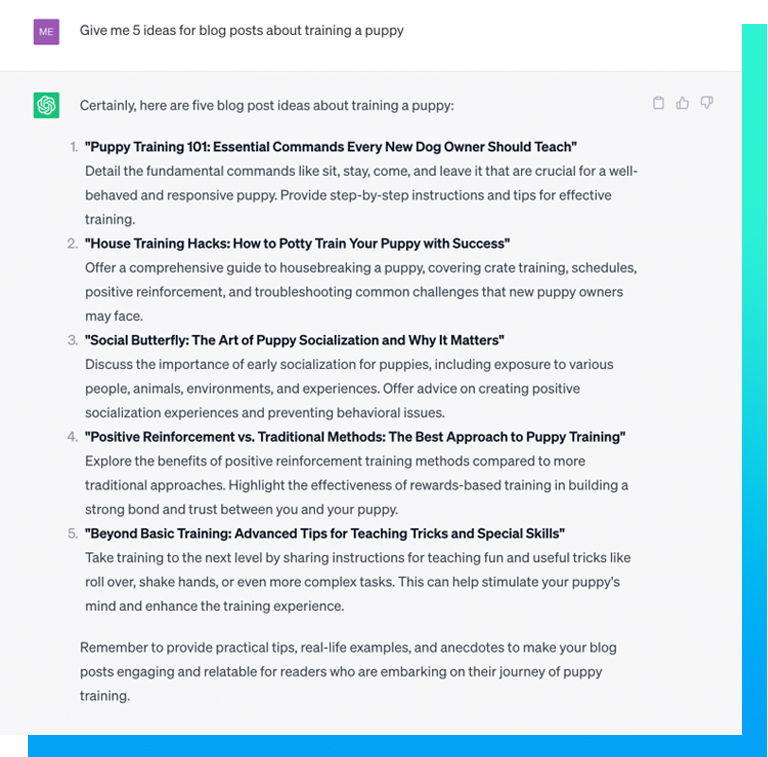
As content writers and strategists integrate AI-generated content into their workflows, they should treat this content as a “rough draft” and never a finished product. Always ensure the accuracy of the information used in the content and be especially wary of “spammy” content, which will negatively influence search engine rankings.
To Predict Seasonality & Demand
One of AI’s most powerful capabilities is machine learning. Machine learning is used to visualize large data sets so marketers can better understand and predict patterns and consumer behavior. Data analysts and engineers use machine learning to identify the correlation or causation of their marketing tactics and make informed decisions about where to target their marketing efforts. They can also use forecasting models to predict how changing spend will affect lead volume, allowing for better demand planning. Data engineers use machine learning tools to track performance, generate insights faster and provide better recommendations.
Marketers use machine learning to understand how one marketing tactic impacts another. For example, data engineers can perform a regression analysis—taking multiple variables and visualizing the relationship between them—to assess how a TV ad impacts branded clicks to a website. If they find the two tactics are correlated, meaning that when a brand runs TV ads, they see an uptick in website traffic from branded search, they can confidently say that their TV campaign is effective. If they want more granular insights, marketers can employ a seasonality analysis to determine when the TV ad drives the most branded clicks so media buyers can adjust placements to maximize ROI.
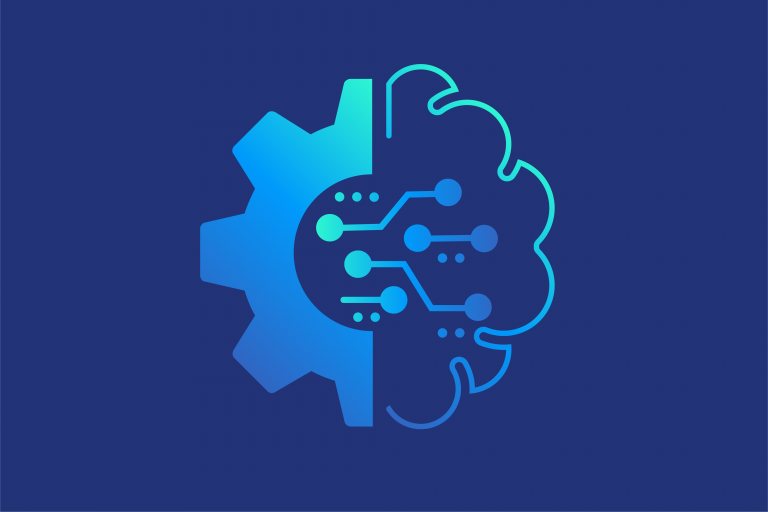
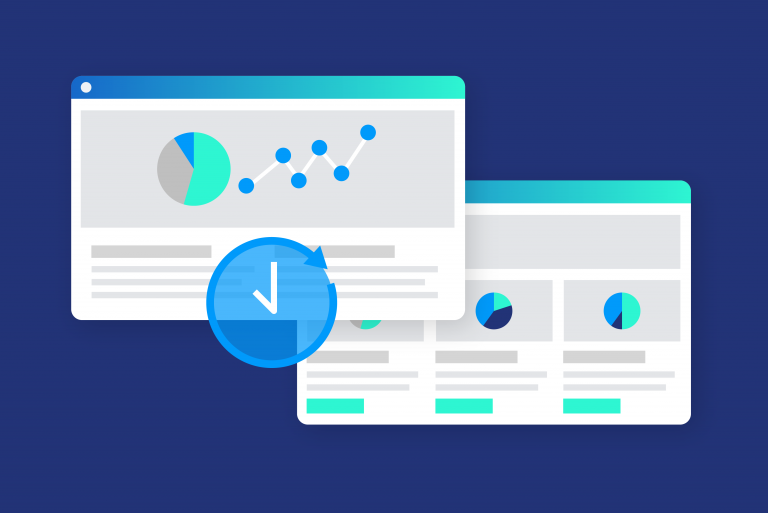
The large scope of digital campaigns can bog marketers down with data faster than they can analyze it. AI dashboards save strategists time by processing those data sets for enhanced reporting and predictive analytics. With historical and real-time data as their guide, machine learning empowers marketers to anticipate their customers’ needs and deliver better experiences than ever before.
To Enhance Design Assets
AI doesn’t just generate copy, write code and analyze data; new generative AI platforms can also create imagery and video from a written prompt. Popular text-to-image AI tools like Midjourney and OpenAI’s DALL·E analyze millions of images and their labels and generate a new image based on the prompt. Much like using ChatGPT for content marketing, these visual AI tools serve as a helpful starting point for designers to create fresh, striking visuals for your brand without having to book a photoshoot.
Designers utilizing professional design tools with Adobe can take advantage of its generative AI technology, Firefly, in a number of ways to enhance and expand existing imagery. For example, Adobe Photoshop offers Generative Fill, a feature that lets designers add, remove and expand elements within an image. For designers creating assets for multiple placements, such as Instagram Stories, Facebook and website header images, the AI can help adjust and fill images to accommodate different aspect ratios and dimensions, saving designers production time. These tools allow brands with limited assets and resources to create impressive visuals in less time.

For engaging product photography, AI can create images that show your product in different settings, both surreal and hyperrealistic. It can also generate an eye-catching background for your website or a meme to share on social media. For variations on a logo or putting together a moodboard, generative AI can help visualize your ideas so a designer can spend more time building upon the concept with more creative details
AI Spotlight: Paid Media
To Optimize Ad Spend
With a seemingly infinite number of pages and ad formats across the web, maximizing ad spend across search, social and display platforms has grown increasingly challenging for marketers. Before AI, paid media strategists spent more time digging through data to identify the right audience and bidding strategies to invest their budgets. This led to nonoptimal ad spend and hours of manually researching, testing and adjusting bids and targeting. It was also very challenging to determine accurate conversion attribution. With Google’s AI-powered ad platforms, marketers gain deeper insights and drive more efficiency in their paid media strategies.
Using machine learning and automation, Google’s algorithms analyze historical audience data and ad performance to determine the best placements, bids and targeting to achieve a brand’s goal. In addition to a wealth of user behavior data, Google considers factors such as location, seasonality, day of the week and even time of day to place ads using its “automated bidding” algorithm. Paid media specialists can pair their brand expertise, including specific keywords, negative keywords and more precise geos, with Google’s data to create a campaign that maximizes efficiency and meets a brand’s goals.
Another ad solution that agencies frequently use is Responsive Search Ads. This machine learning-enabled platform creates multiple variations of headlines and descriptions to find the optimal ad copy. Advertisers also receive AI-generated recommendations from Google to optimize their campaigns. Once an ad is launched, the search engine will monitor performance and give it an optimization score. Low-scoring ads receive recommendations such as adding more unique headlines or descriptions, plus predicted ad performance with the recommended changes.
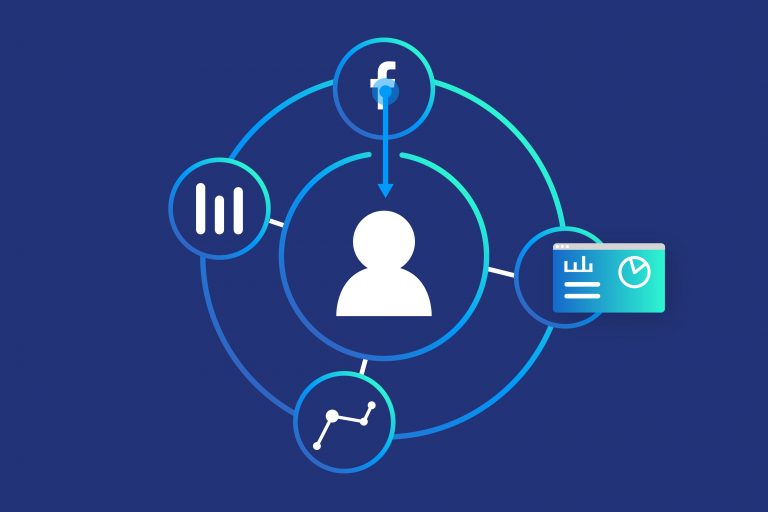
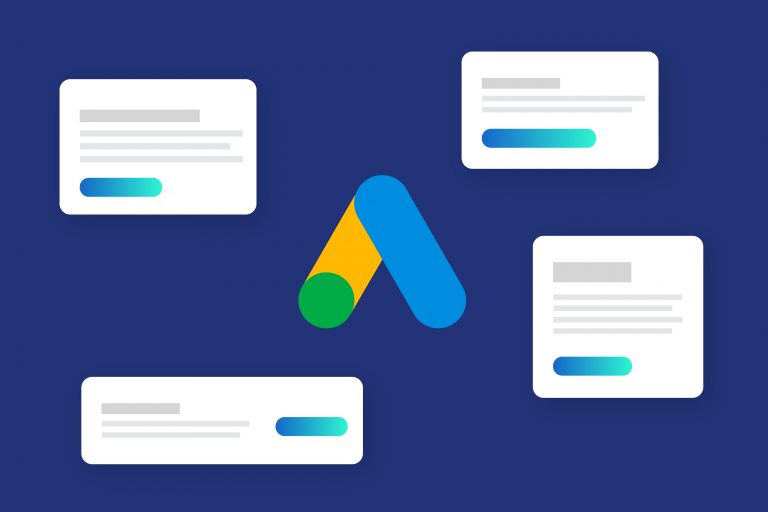
One of the most exciting insights that AI offers advertisers is data-driven attribution. Before this offering was available, conversions could only be attributed with a few conversion modeling options, usually falling back on the more simplistic first- or last-click models. But that method doesn’t tell the complete story; users likely interacted multiple times with a brand online before converting or purchasing. Data-driven attribution uses conversion data from each interaction—across web, search, YouTube, display and Discovery/Demand Gen Ads—to understand the entire purchase journey and the effectiveness of each touchpoint. It then calculates the “actual contribution” of each ad interaction throughout the journey. The paths that drive the most conversions will receive more credit in the automated bidding process, helping to drive more conversions.
The Risks of Over-Reliance
Even with exciting new developments, several limitations in the technology exist:
- Inaccuracy: Without intimate knowledge of a brand’s identity, goals or target audience, AI tools can’t create content or optimize paid media spending tailored to a brand’s unique needs.
- Bias: Studies have found that even AI shows bias in its results, as the content is only as good as the information its developers provide.
- Creativity: AI tools can’t offer entirely new ways of thinking or create brand-new ideas. Every result has an explicit or underlying correlation to something that already exists. That means multiple brands could unintentionally use the same AI-generated content or imagery.
- Accountability: AI tools don’t always use the most recent available data, nor can they conduct their own research.
- Empathy: AI tools can try to emulate human emotions, but they can’t create genuine connections, consider feelings or lived experiences, remove bias or deliver sensitive solutions.
- Ethics: AI tools can produce answers that don’t align with situational or holistic human values. When dealing with sensitive, controversial or political topics or matters of opinion, it’s best to avoid AI-generated content.
As marketers celebrate AI’s ability to automate repetitive work and generate ideas, they should be wary of relying too much on these tools to do their jobs. Over-reliance can inhibit creativity and originality. Relying too heavily on any tool—not just AI—reduces the opportunity for innovating new ways to do things, human intuition and critical thinking skills. So, while AI tools can complement our capabilities (in marketing and elsewhere), they shouldn’t completely replace them.
AI overreliance can lead to pitfalls across industries and applications, from self-governing vehicles that can’t make spontaneous yet necessary driving decisions to customer service chatbots proving more aggravating than helpful. Negative outcomes like societal biases can happen with humans interpreting and inputting data as well, which is why diverse teams and strategies are essential to quality work. Now and in the future, we must gauge AI’s potential through personal applications and support it with the decision-making, discretion and judgment acumen only humans can offer.




